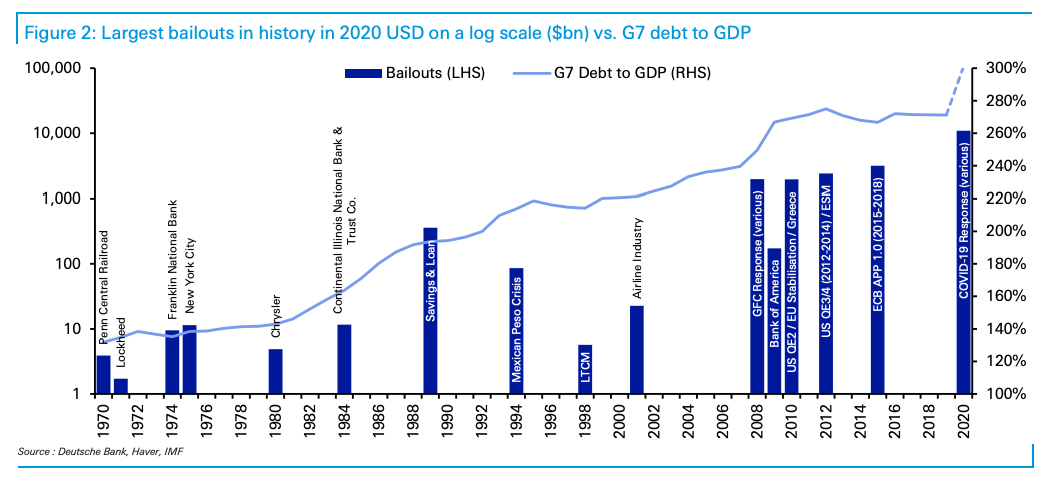It looks like you're new here. If you want to get involved, click one of these buttons!
We have had many thorough conversations here at MFO. Here's what I searched:@bee Sorry if I'm being dense. My wife has an HSA through her employer. I understand contributions are tax deferred and I also understand it converts to IRA after you retire, or if you lose your job. What I didn't know however is you can invest it right away. First, will find out if the HSA is even invested is some fund at her employer plan. Second, if possible to divert funds into external fund.
However, most important question. Isn't investing it risky? I mean what if fund tanks right about the time you need to pay doctor and you run out of cash? For us, HSA just started last year and we used a bit of it of course already, so not much there at this time.
https://time.com/5828325/coronavirus-covid19-seasonal-asymptomatic-carriers/Chinese scientists say the novel coronavirus will not be eradicated, adding to a growing consensus around the world that the pathogen will likely return in waves like the flu.
It’s unlikely the new virus will disappear the way its close cousin SARS did 17 years ago, as it infects some people without causing obvious symptoms like fever. This group of so-called asymptomatic carriers makes it hard to fully contain transmission as they can spread the virus undetected, a group of Chinese viral and medical researchers told reporters in Beijing at a briefing Monday.
That's similar to what a trader (Darlene-someone, IIRC) years ago called a 'Chicken Bull Put' ... she sold put spreads that went out less than a week, if not day, before expiration. The long put protected the position from multi-sigma moves against it, which I thought is a good thing. Indeed, selling puts or covered calls can goose annual returns if done right over time ..... so good luck!
I made $500 selling OTM puts in SPY last week in my fidelity account. SPY has 3 expiry dates every week. I just sold PUTs the day before each expiry. It was ridiculously easy.
For a few months, I've been promising myself to make a post on being careful about what numbers do and don't represent (i.e. look behind the numbers). Figures like ERs, duration, performance. One of these days.I own PRIDX. ... It fell hard with coronavirus. But it's coming back, down -13% now, ytd. Down to 3 stars, but still with a silver decoration. ... Top 15% among peers, ytd. Not a great showing compared to peers LAST year, but still very good indeed.
For example a portfolio of 100% PRWCX would have a "Safe Withdrawal Rate" of 10% and a "Safe Perpetual Withdrawal Rate" of 5.6%. The rule of thumb for a Safe Perpetual Withdrawal Rate is 4% according to the Trinity Study (linked below).
The manufacturing sector hasn't completely rolled over yet, but the services sector simply ceased to exist starting late last month.....The message is clear: Main Street isn't just hurting, it is disappearing in a very literal sense. As Atlanta Fed boss Raphael Bostic warned earlier this month, "May is going to loom large, in terms of the transition of concern from this being a liquidity issue… to this perhaps translating and transferring into a solvency issue, and whether companies can exist at all."

.(...from Homebase, a scheduling and time tracking tool used by more than 100,000 local businesses covering 1 million hourly employees.)
Deutsche Bank rolled up the fiscal and monetary support programs announced and implemented in the US and Europe into a single "bailout" figure. The sheer size of the COVID-19 response necessitated a log scale (on the left axis) in order to help "better identify the earlier bailouts and get a rough feel visually for the numbers," as the bank put it. ....."Obviously we won’t know how much will be used until much further down the road," the bank cautioned, in the course of presenting the numbers and accompanying visuals.

https://seekingalpha.com/article/4340027-dystopia-now
....policymakers have been deliberately suppressing volatility, compressing risk premia, tamping down credit spreads and keeping the market wide-open for borrowers for the better part of a decade....
Deutsche Bank's George Saravelos.....At the extreme, central banks could become permanent command economy agents administering equity and credit prices, aggressively subduing financial shocks. With unlimited capacity to print money, central banks have unlimited capacity to intervene in asset markets too. Put simply, a central bank that pegs bond, credit and equity markets is highly likely to stabilize portfolio flows as well.
This has been settled law for decades now. Here's a CNBC page discussing whether rewards are taxable.I believe that, unlike many cash back cards, Fido credit card now sends the tax form for these 2%, so it is not 2% cash back (no taxes, just cash return), but 2% minus taxes.
The Trinity Study:First, I wanted to see how this was working with recent stock market returns. The original study was only covering years up to 1995. I wanted to have more recent data. I wanted to make sure that the results were holding with more recent stock market behavior. So this simulation will cover returns until the end of 2019!
Secondly, the original study was only covering up to thirty years of retirement. I wanted to be sure that the portfolio can sustain withdrawals for much more extended periods. For people retiring early, I think that 50 years is not unreasonable.
© 2015 Mutual Fund Observer. All rights reserved.
© 2015 Mutual Fund Observer. All rights reserved. Powered by Vanilla